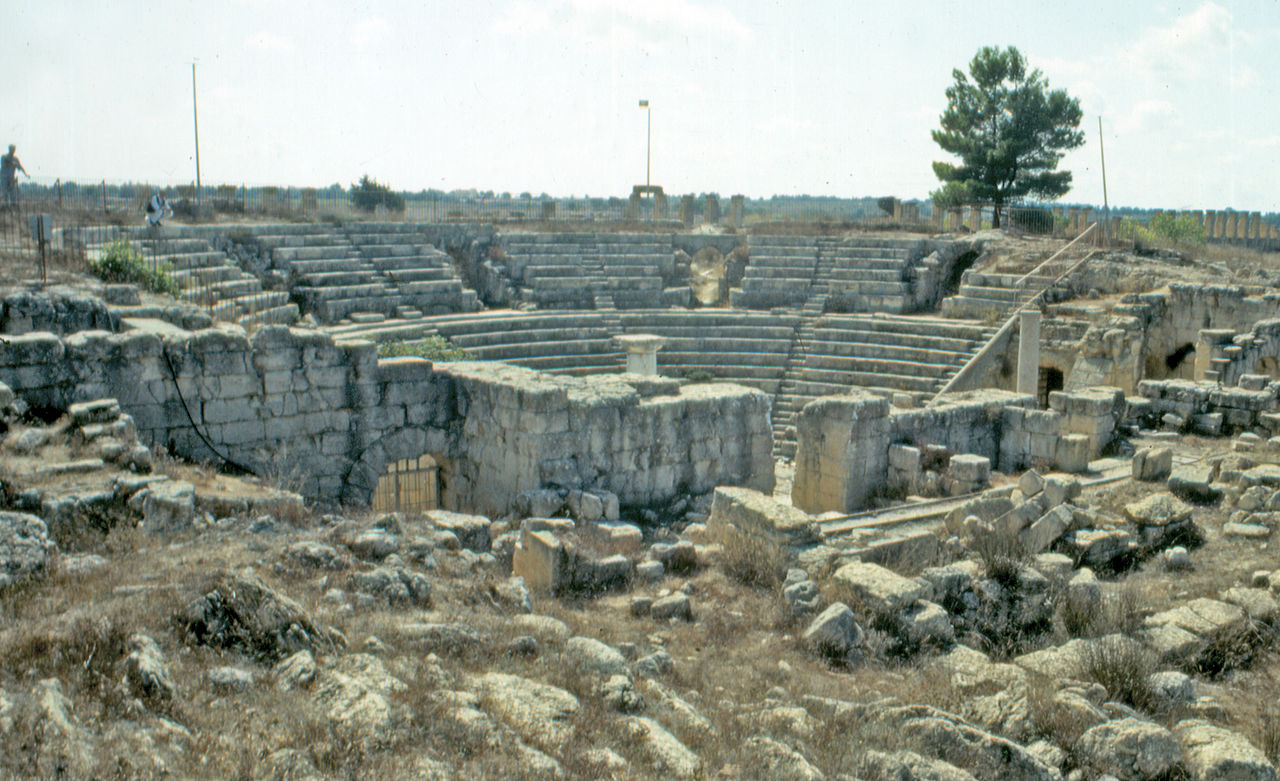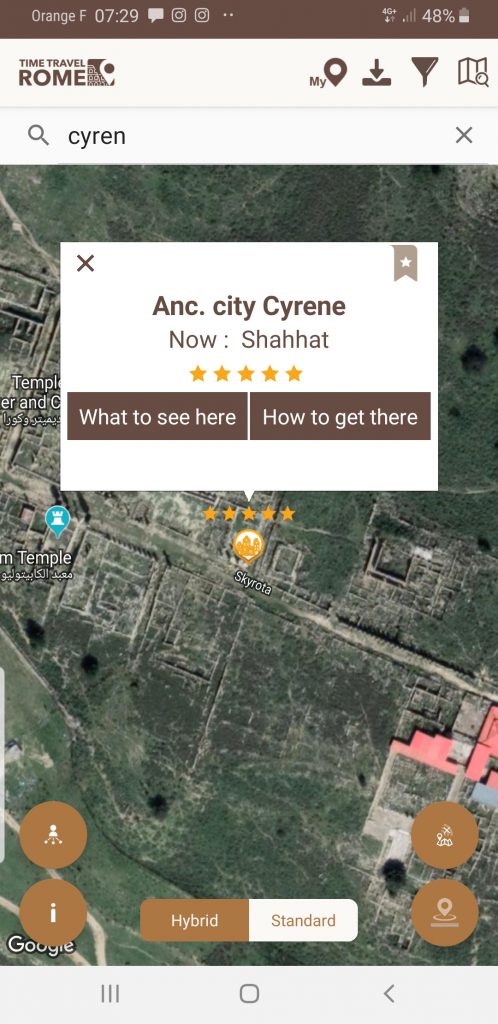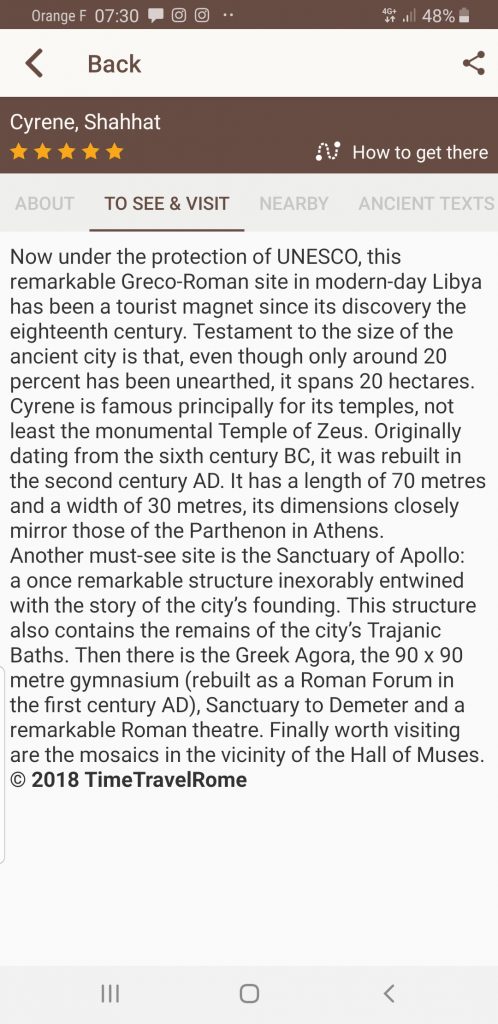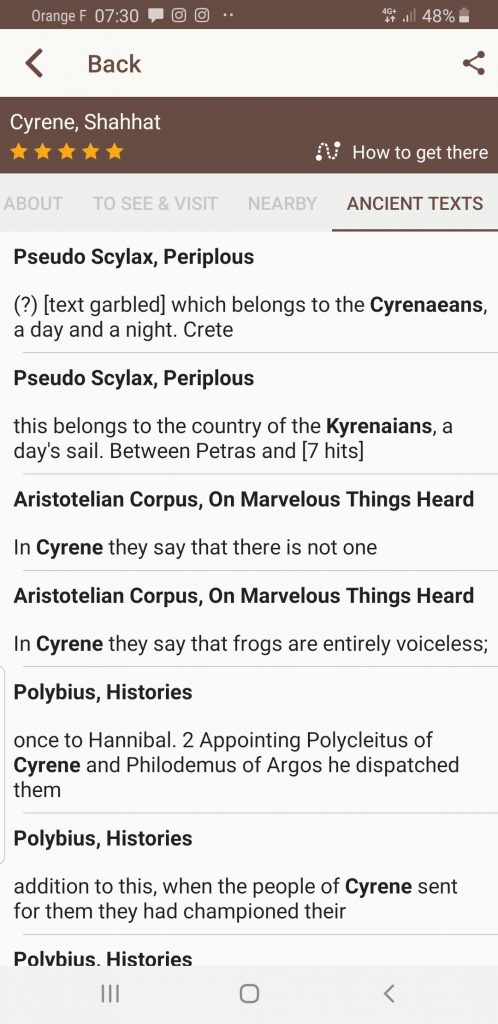The wars following the death of Alexander saw his great empire split into four, each considered a Hellenistic Kingdom. There were the Seleucids to the east, based out of Babylon. The Antigonids ruled Macedonia and Greece. The great Ptolemaic Empire controlled Egypt from their seat in Alexandria. The fourth and often forgotten kingdom was that of Pergamon, in northern Asia Minor. These four kingdoms engaged in wars and political intrigue, fighting so fiercely amongst themselves that the rising Roman Empire was eventually able to easily swoop in and take control, one by one. Yet in 249 B.C., the kingdoms were at their pinnacle of power.
Cyrene was a Greek city on the coast of Libya. A group of settlers from the island of Thera founded it in 631 B.C. It fell under Ptolemaic rule, but in 276 B.C. Magas, son-in-law of Ptolemy, declared himself the independent king of Cyrene. He married Apama, daughter of the Seleucid King Antiochus I, in an alliance against the Ptolemaic Kingdom. Their daughter, Berenice II, queen of Cyrene by birthright, became a powerful player in the treacherous political arena.
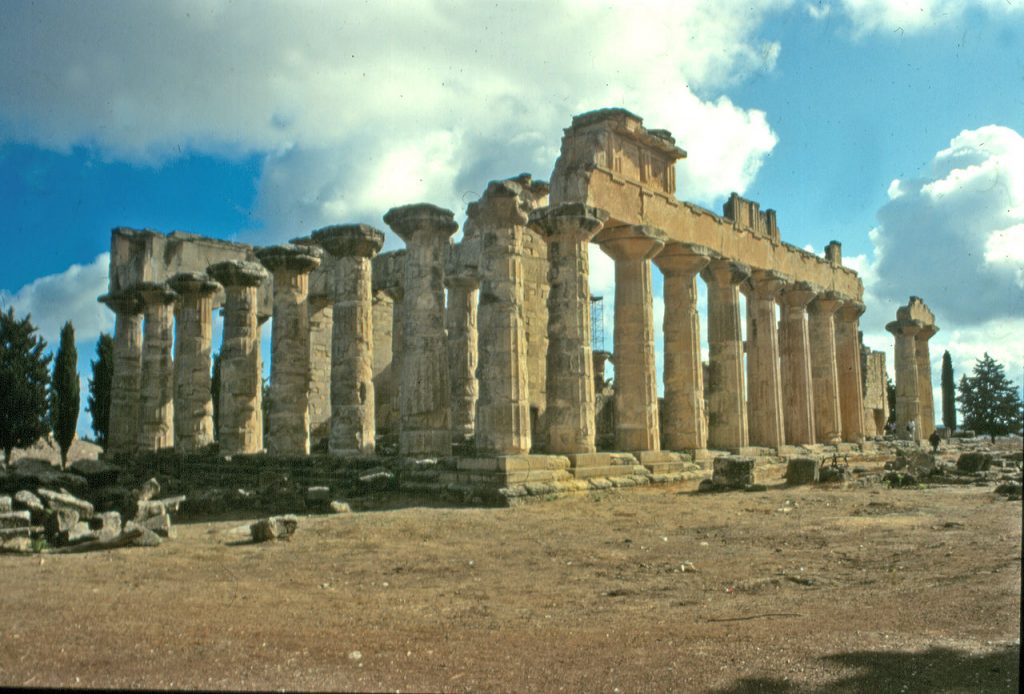
Temple of Zeus by MM – is licensed under Public Domain
Berenice of Cyrene
A number of the women descended from the major Macedonian generals were tough, smart, and as ruthlessly ambitious as any man. In 249 B.C., Magas died, leaving Apama a widow. She quickly maneuvered for an alliance with the Antigonid Empire. Its rulers were her uncles, and she sought protection from Cyrene’s former rulers in Egypt. She offered the hand of her beautiful young daughter, Berenice, and through her the throne of Cyrene, to Demetrius the Fair, the brother of the Antigonid King. He accepted the match, and married Berenice. Yet not long after the marriage, it was Apama and Demetrius that became lovers. They carried on an affair in plain view of Berenice.
Berenice was not a safe person to cross. She had learned to fight and ride from a young age, and even went to war with her father. One story tells that in a great battle, her father Magas had lost heart and fled the field. The army seemed ready to follow, but Berenice rode up, rallied the soldiers, and led them to victory. Now the same fiery young woman saw her new husband abandon her in favor of her mother. Jealous and hurt, Berenice assisted conspirators in a plan to assassinate Demetrius, who had already shown himself to be a cruel and licentious king. She led the assassins to her mother’s bedchamber, where the lovers were together. Apama tried to protect Demetrius, but Berenice coolly instructed the assassins not to harm her mother, and watched as they murdered her husband. He died in the arms of his mother-in-law.
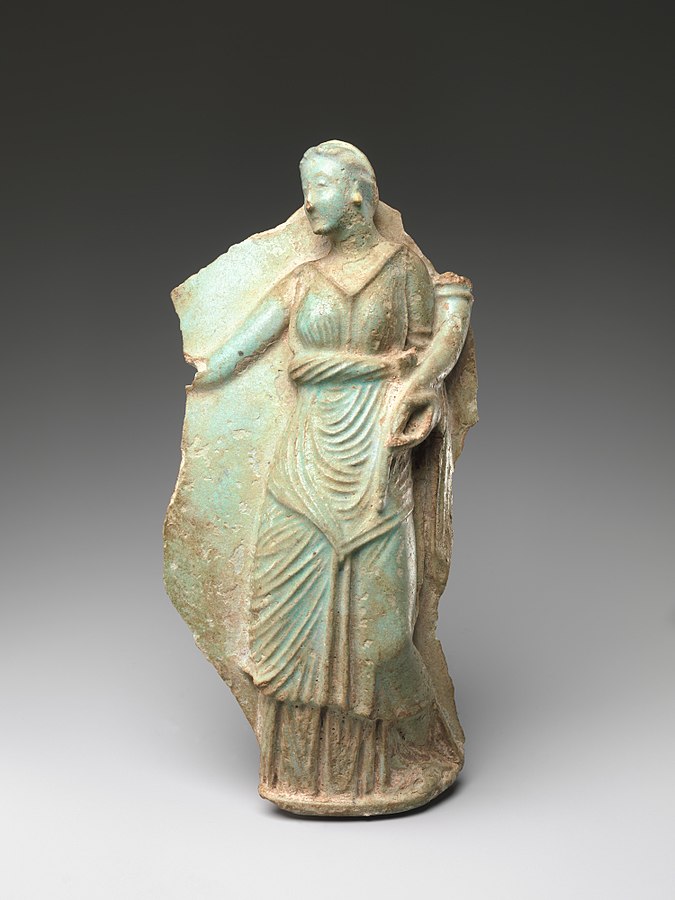
Fragment of a Vase Depicting Berenike – by the Metropolitan Museum of Art, licensed under CC0.
An Unhappy End
A free agent once more, Berenice married Ptolemy Euergetes of Egypt, and bore him a son, Ptolemy Philopater. She is said to have raised horses in Egypt, and to have personally raced them at the Olympic Games sometime between 245 and 241 B.C. Unfortunately her murderous ways came back around, and the end to her story is not a happy one. After the death of her second husband, Berenice expected to be queen regent of Egypt, as her son was only seventeen years old. The influential court advisor Sosibius saw this as the perfect opportunity to seize more power. In a secret council, he urged Philopater to murder his mother, uncle, and brother. The only man who spoke against this plan was the honorable King Cleomenes of Sparta, exiled to Egypt. The plan went forward, and Philopater had his mother killed, along with her brother-in-law and second son, Magas.
Under Roman Rule
Back in Cyrene, the city remained independent for another two centuries. However, Rome was on the march, and in 74 B.C. they took control of Cyrene. Only a year later, there was a small uprising of Jewish citizens against the new Roman rule, but it was quickly put down. Cyrene enjoyed a time of peaceful success during the final decades of the Republic and early Empire. However, in 117 B.C., a massive group of rebellious Jews in Cyrene broke into riots and murdered a large number of Greek citizens. In order to preserve the city, Emperor Hadrian gave it the status of colonia, and rebuilt and repopulated it.
Yet despite this, the city began to decline. It had flourished due to its export of siliphium, an herb valued for its ability to interrupt conception. It was so popular, in fact, that it was harvested to extinction. Without its staple export, Cyrene couldn’t compete with the growing international trade emporium at nearby Alexandria. After two earthquakes rocked the city, it was never re-invigorated. Ammianus Marcellinus, writing in the mid fourth century A.D., described it as a ruined and deserted city. Cyrene’s fourth century misfortune, however, is good for the modern era. Having been abandoned in its Roman period and not converted into a medieval city, the ruins are extensive, and visitors can enjoy viewing the remnants of the great city.
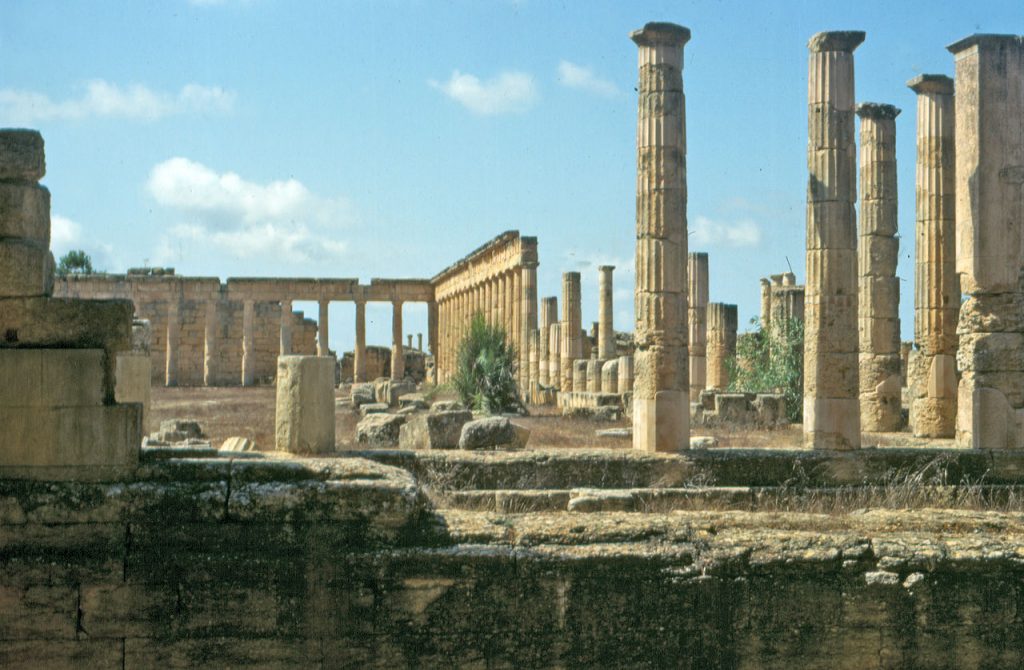
Cyrene Gymnasium by MM – is licensed under Public Domain
What to See Here Now ?
Now under the protection of UNESCO, this remarkable
Greco-Roman site in modern-day Libya has been a tourist magnet since its
discovery the eighteenth century. Even though only around 20 percent has been
unearthed, it spans 20 hectares. Cyrene is famous principally for its temples,
not least the monumental Temple of Zeus. Originally dating from the sixth
century BC, it was rebuilt in the second century AD. It has a length of 70
metres and a width of 30 metres, its dimensions closely mirror those of the
Parthenon in Athens.
Another must-see site is the Sanctuary of Apollo. It was once a remarkable
structure and is inexorably entwined with the story of the city’s founding.
This structure also contains the remains of the city’s Trajanic Baths. Then
there is the Greek Agora, the 90 x 90 metre gymnasium, rebuilt as a Roman Forum
in the first century AD. Also of particular interest is the Sanctuary to
Demeter and a remarkable Roman theatre. Finally worth visiting are the mosaics
in the vicinity of the Hall of Muses.
Cyrene on Timetravelrome:
To find out more: Timetravelrome.
Author: written for Timetravelrome by Marian Vermeulen.
Sources: Diodorus, The Library of History; Plutarch, Cleomenes
Header photo: Cyrene Theater by MM – licensed under Public domain.
